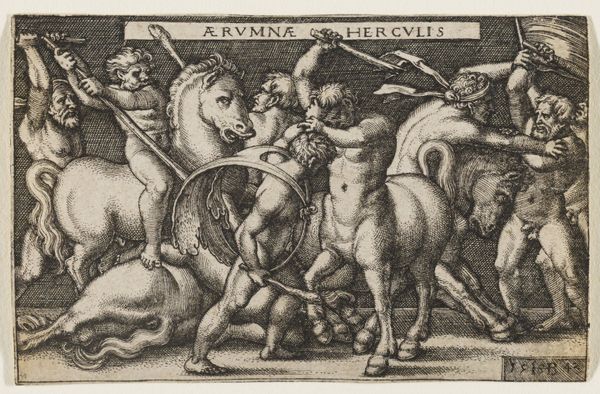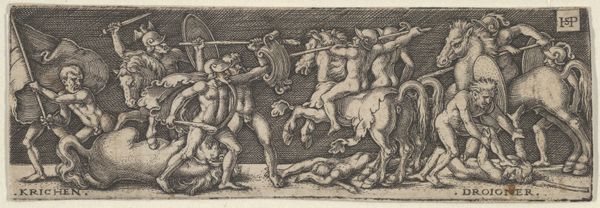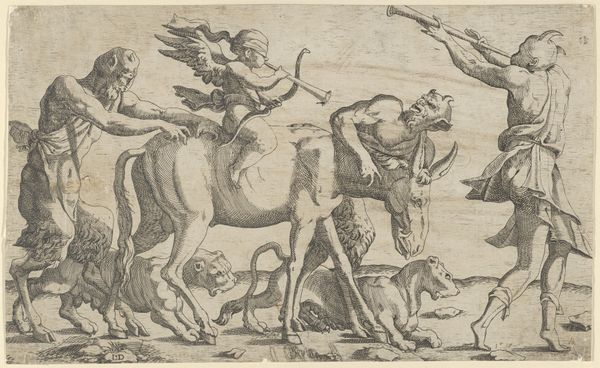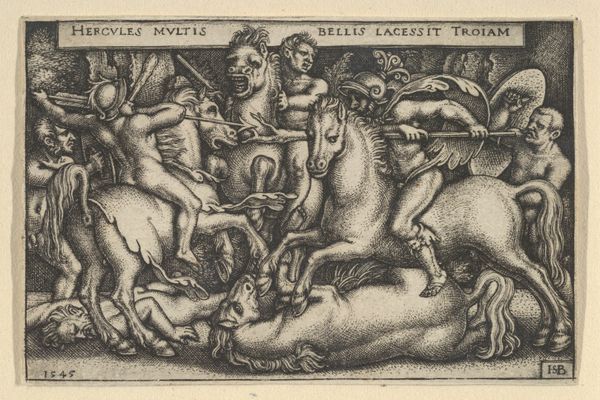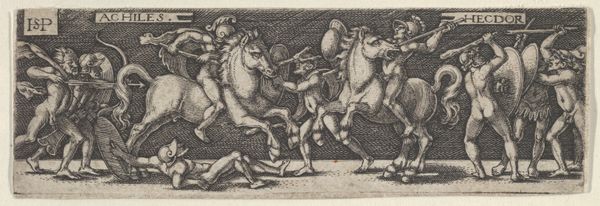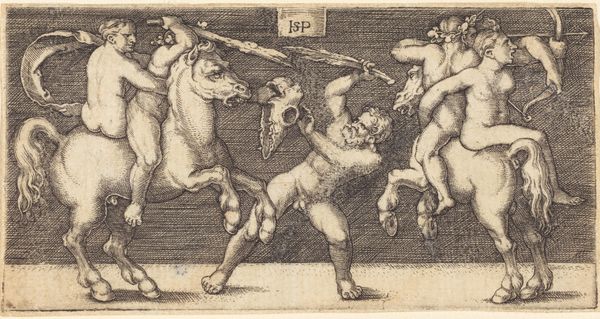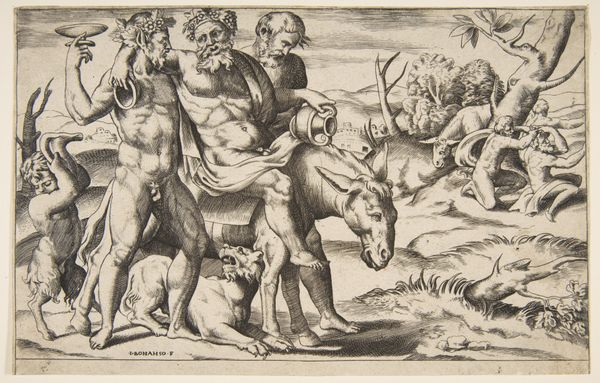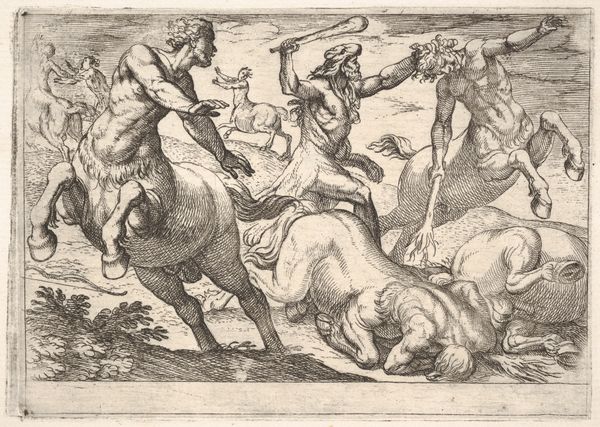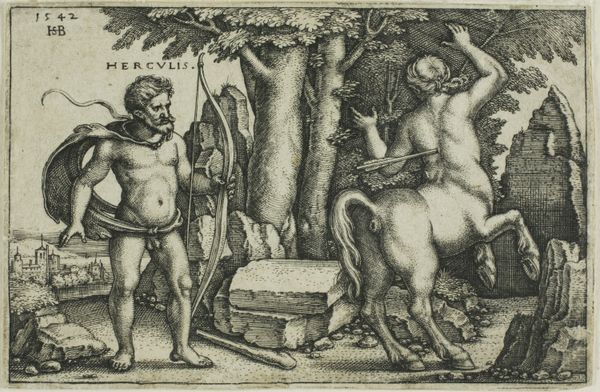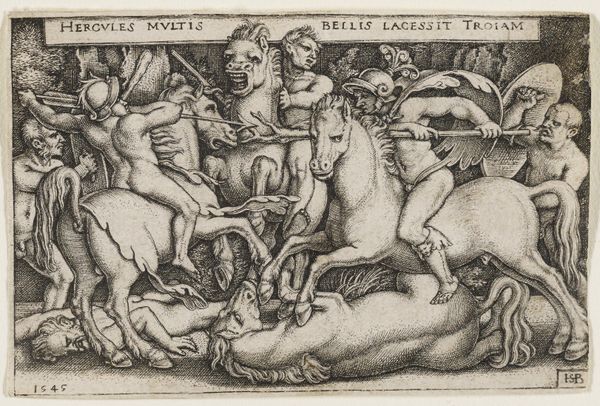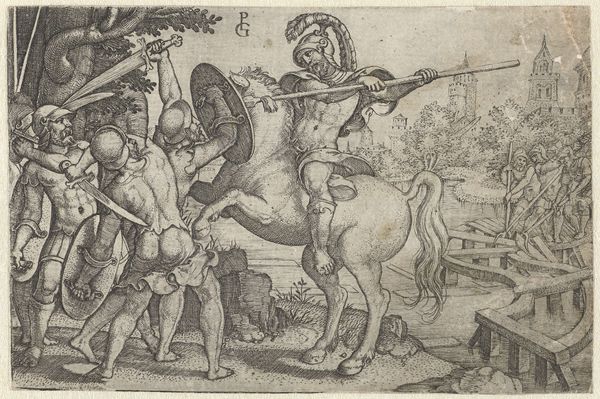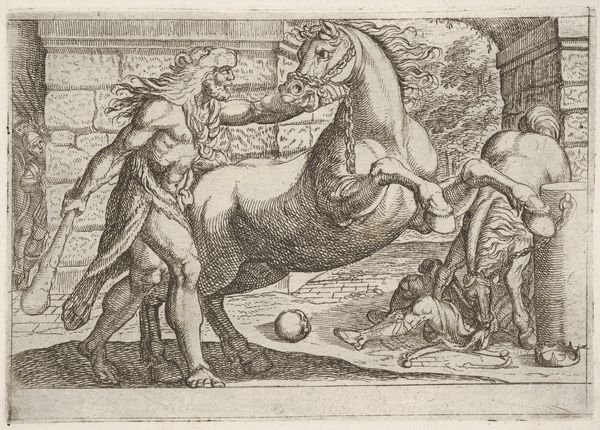
Hercules with his club in center fighting a centaur, other men fighting centaurs to left and right, from 'The labors of Hercules' 1542
0:00
0:00
drawing, print, engraving
#
drawing
# print
#
figuration
#
men
#
history-painting
#
northern-renaissance
#
engraving
Dimensions: Sheet: 2 x 3 1/8 in. (5.1 x 7.9 cm)
Copyright: Public Domain
Curator: Looking at this frenetic scene, it’s difficult to know where to focus, isn't it? What grabs you first? Editor: Utter chaos! That's my first thought. Muscled bodies everywhere, writhing, grappling... the centaurs, symbols themselves, locked in combat with these men. Curator: Precisely. The piece we’re observing is Sebald Beham’s engraving from 1542 titled, "Hercules with his club in center fighting a centaur, other men fighting centaurs to left and right, from 'The labors of Hercules'". It currently resides at The Met. Beham, a prominent figure in the German Renaissance, was known for his small, intricate prints. Editor: And what does it tell us about Beham’s era that Hercules, a figure of mythic, masculine power, becomes a key visual of Renaissance artistic expression? I wonder if these portrayals can be tied to displays of wealth and status during the time? Curator: I think there’s a lot of validity to that assessment. Look closely. Notice the detailing in the musculature of the figures and the intense expressions – so dramatic! Editor: The hyper-masculine depictions of both human and centaur forms, the graphic violence... it feels like a statement about power, not just physical, but also social and political. It seems designed to elicit fear. Is it to subdue rebellion perhaps? The chaos could reflect a fear of disruption? Curator: I find the medium itself rather remarkable, personally. Think about the labor involved in creating such detail with engraving tools. This piece is tiny and exquisite! There is a tension created when so much expressive labor is given to renderings of masculine force. Editor: Right. The use of reproductive printmaking, makes me wonder, in terms of its historical impact, if its small size affected its spread and influence in society? Its availability? Curator: That's something worth considering. Beham seemed so focused on skill... sometimes I can't help but feel like it overshadows any intended message. Though I concede, messages always exist whether they are intentional or not. Editor: Maybe that's the heart of the matter: the skill in capturing a violent mythological moment becomes its own kind of commentary. It presents the moment and prompts the viewer to contend with that violence – as an aesthetic problem and, perhaps, as a problem of power, hierarchy, and ultimately, the human condition.
Comments
No comments
Be the first to comment and join the conversation on the ultimate creative platform.
